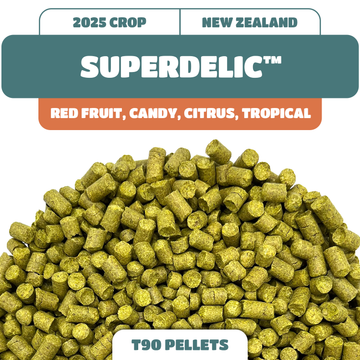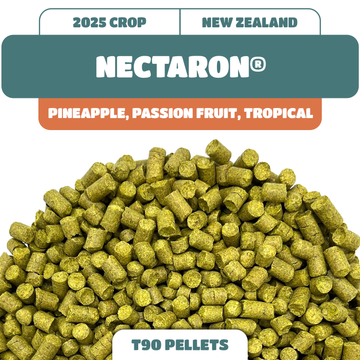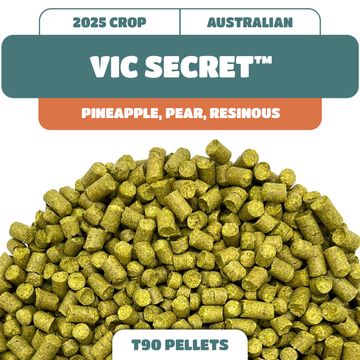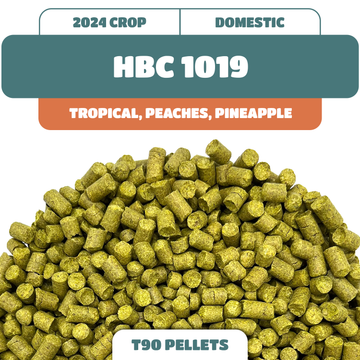What Do You Need To Make Homemade Beer?
Brewing is the process of creating beer from scratch using four main ingredients and four steps. The basic ingredients to beer are grains, hops, yeast, and water. The four steps are malting, mashing, boiling, and fermenting.
THE FOUR BASIC INGREDIENTS IN BEER
Malted barley is the most common grain used for beer. In other beers, malted wheat and unmalted ingredients such as corn and rice are used. Malt provides the sugar that the yeast consumes during the brewing process, ultimately determining the beer's strength and color. Malting prepares the grain for use in brewing.
Hops are the zest for each type of beer. It provides both bitterness to balance the sweetness in beer as well as flavor and aroma. As compared to malt, hops are added in relatively small quantities to beer, even to the most bitter IPAs.
Most beers are generally 90% water by volume. A goodly amount of water is also used as a part of the brewing process. A rule of thumb for novice brewers is if your water tastes good, it is suitable for brewing. If your water doesn't, use bottled spring water instead. Never use water that has been treated by a water softener.
THE FOUR BASIC STEPS TO BREW BEER
Malting begins the action of converting the raw materials into beer. The first step is to germinate the grains, allowing naturally-occurring enzymes in the grains to be activated to be used in the next step in brewing. The grains are dried by heating, also known as kilning. Kilning allows the grains to be stored for long periods of time and developing malt flavors and aromas extracted in the brewing process. Most brewers leave this step to the maltsters since it is an important step in creating beer.
Mashing is the next step. In mashing, the malted grains are soaked in hot water. During this, the starch in the grains is dissolved while the enzymes activated by the maltster break down the large starch molecules into smaller sugar molecules. The main sugar produced in mashing is maltose. Malt sugars from the mash are what fuel the yeast cells during fermentation.
Boiling and Cooling is the third step. This is a solution of water, malt sugars, and other substances from the malt or wort (unfermented beer). Before wort is fermented, it needs to be boiled. Boiling serves to pasteurize the wort. It also helps to stabilize the finished beer. During the boil, hops are added to the wort, and bitter compounds are extracted from them. After the boiling, the wort is cooled so that yeast can be added.
Fermenting and Conditioning is the final step. When the wort is cooled, the yeast is added. After a short time in which the yeast acclimate to the wort, the fermentation process begins. For those making average-strength ales, fermentation will last for several days up to a week. For brewers who desire stronger beers or lagers, fermentation will be longer and can last up to months. Once the beer has fully fermented and conditioned, it is ready to be bottled or kegged and is prime for serving.
HOMEBREW EQUIPMENT AND INGREDIENTS
To brew at home, you will need a small amount of specialized equipment—the more complex the brewing method, the more equipment you will tend to need.
A Brewpot or Brew Kettle is usually an aluminum or stainless steel vessel. Anything less than four gallons may result in either boilovers or scorching. A secure lid is important. A unit with a built-in thermometer is handy if you plan to cool the wort inside the brew pot.
Fermenters and Bottling Bucket: Homebrewers commonly use a five to six-gallon carboy and food-grade plastic buckets, which are around 6.5 gallons. These will be used for both a fermenter and bottling vessel. If you choose a carboy, you'll need a #7 drilled rubber stopper; if you go for two buckets, you'll need a lid for one of them with a hole drilled for the airlock.
An airlock is a device that allows carbon dioxide produced during fermentation to escape from your fermenter while preventing oxygen and airborne contaminants from entering.
A racking cane is a long piece of hardened plastic with a curve at the end. You will also need 6 feet of food-grade vinyl siphon hose that fits over the end of the cane to transfer beer and wort from one vessel to another for racking. If you plan to bottle your homebrew, you need a bottling wand, capper, and caps.
Ingredients:
- Malted grains, dried malt extract or liquid malt extract, or crushed grains. Specific amounts needed will vary on the brewing method and recipe.
- Hops. You can choose pellets or "leaf" hops.
- Brewing Yeast - Dry yeast is a good choice for beginner brewers. Liquid yeast is an option, but be sure that the yeast is fresh, refrigerated, and adhere to manufacturers' guidelines.
- Homebrew-friendly cleaning and sanitizing chemicals, which are available at your local homebrew supply retailer or online.
- Other items to borrow from the kitchen include a measuring cup, a large spoon for stirring, a large funnel, and a large strainer or colander.
CLEAN AND SANITIZE YOUR EQUIPMENT
Brewing equipment needs to be as clean and as free from biological growth as possible. The only organism you want growing in your fermenter is yeast. Contaminated beer will turn out sour or develop other off-flavors. Besides, the beer may gush out when opened, or your bottles may explode. Use cleaning products specifically intended for brewing. Be meticulous. Good enough really isn’t. You may be the biggest single threat to your own beer! Wash your hands often while brewing. When you're done, clean your brewing equipment thoroughly and wipe down all surfaces that may have gotten spattered.
Comparing the cost of homebrew to well-made craft beers at the store (which most homebrews are comparable to), homebrewing is actually quite cost-effective. About $35 worth of ingredients yields seven six-packs of porter at the cost of roughly $5 per six-pack.











